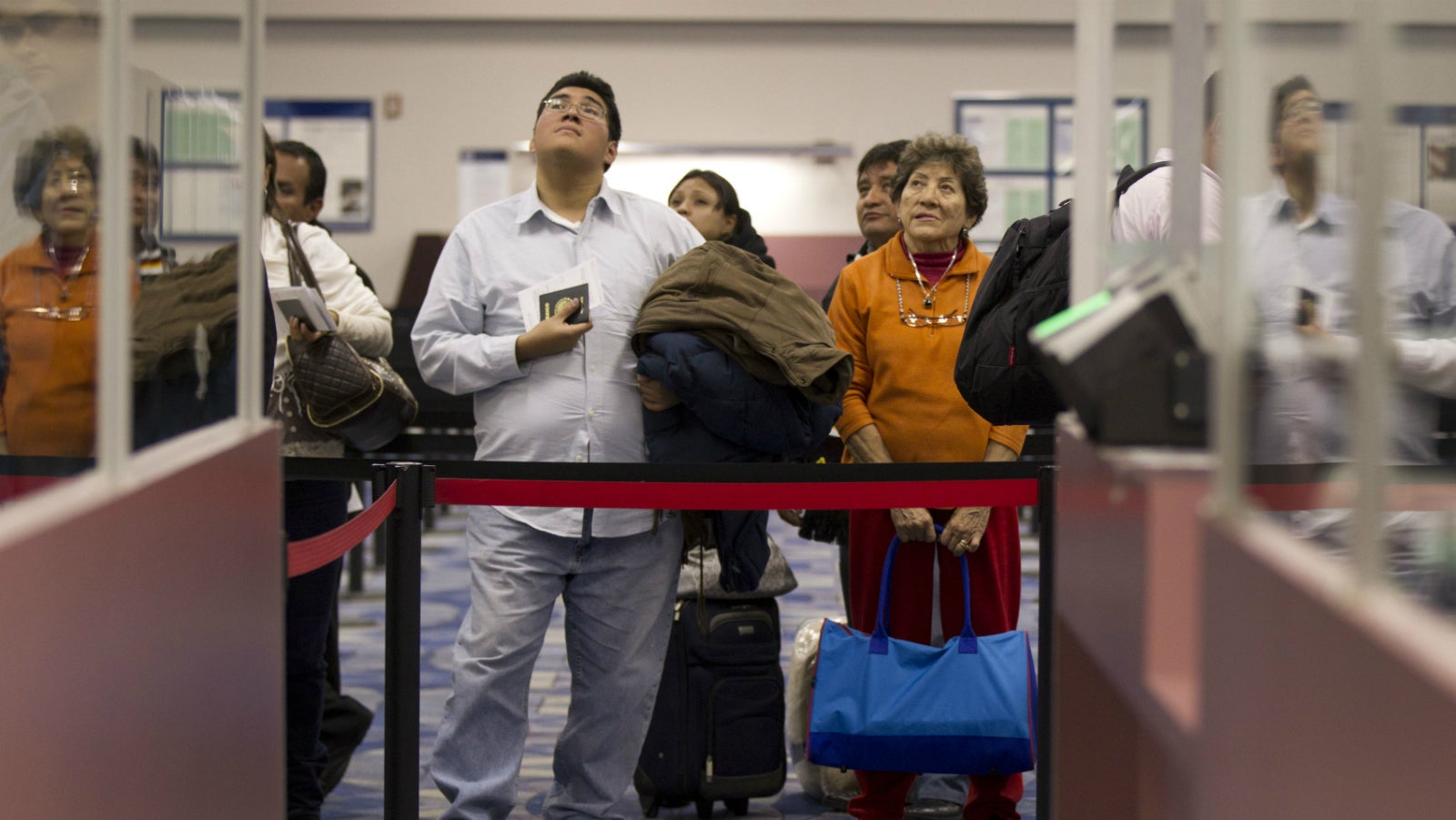What’s in a name: India’s e-visa is actually a smart programme
Last week, the Indian government changed the name of its new tourist visa scheme to e-tourist visa—roughly four-and-a-half months after it was launched on Nov. 27, 2014.


Last week, the Indian government changed the name of its new tourist visa scheme to e-tourist visa—roughly four-and-a-half months after it was launched on Nov. 27, 2014.
The earlier name—tourist visa on arrival enabled by electronic travel authorisation (ETA)—had set tongues wagging as it was creating confusion among tourists.
For its new entry permit programme, the government had inappropriately used the phrase “visa on arrival”—which typically means that the tourist is authorised a visa at the airport of the foreign country being visited.
However, this is how India’s ETA works: A tourist should apply for a visa online at least three days in advance, pay the fee, and carry a print of the travel authorisation to get the necessary stamp at the immigration checkpoint to enter the country. Right now, 44 countries can avail of a visa through ETA.
The incorrect nomenclature prompted tourists to travel without having undergone the online process in advance. As a result, tourists couldn’t check in, as the Wall Street Journal reported, and were turned back, leading to complaints on social media from travellers, as well as ”some Indian embassies,” asking for a change of name.
But despite all the criticism, here is why India should not opt for a regular visa on arrival programme.
Building infrastructure
Natasha Agarwal, a consultant at the Indian Institute of Foreign Trade, told Quartz that visa on arrival can be “an infrastructure hurdle for the government, especially at the immigration checkpoints.”
In November, the government launched the ETA for 43 countries. Before that, citizens of 12 countries could avail a visa on arrival (not electronically) in India. Had the government extended the same programme—instead of building an online system—for the additional 31 countries, it would have had to build human infrastructure four times its existing capacity, said Agarwal.
Now the government is set to allow e-tourist visas to 150 countries soon, the Indian tourism ministry’s Usha Sharma said on April 20. Through ETA, “a lot of work is done before you (a traveller) actually get there,” Tanvi Madan, a fellow in the foreign policy programme at the think tank Brookings Institution, said. “And you don’t need number of immigration officers sitting at the airport.”
For the traveller
There’s no language barrier when the the major part of visa application is carried online. “At the immigration checkpoint, it is a problem if a traveller doesn’t know the (local) language, or doesn’t know how to make the payment,” Agarwal said.
So for a traveller, it’s easy to process the visa online, as it is in English.
Security concerns
But it’s not only about the logistics. Security is not compromised with an e-visa, as any possible security threat can be kept in check when the due diligence is carried on before the traveller arrives in India.
“How do you send a person back if found nefarious?” Madan said. “Visa on arrival could mean you can’t do due diligence onsite because the person is already there.”
Digital India
Collecting data online works for better policy formulation.
“What you are trying to do is collect data immediately through the ETA system, and have a readymade database that can help further analysis and formulate better policies,” Agarwal said.
Limitations
A major defeating factor is India’s obsession with the number of countries that ETA has been extended to—and not with the countries themselves.
“What is the contribution of the one quarter countries (that India hands out ETA to) to the percent in India’s GDP? It’s hardly anything,” Agarwal told Quartz. “So what is the economic benefit of the policy?”
India recorded negligible trade with countries like Micronesia, Palau, Vanuatu, Solomon Islands, and Tonga, between 2010 and 2013. In that sense, opening up to the Chinese will certainly be a smarter choice.
Moreover, ETA is not beneficial for countries with low penetration of internet. In Cambodia, for instance, average internet access for the period 2010-2013 was roughly four out of 100 people.